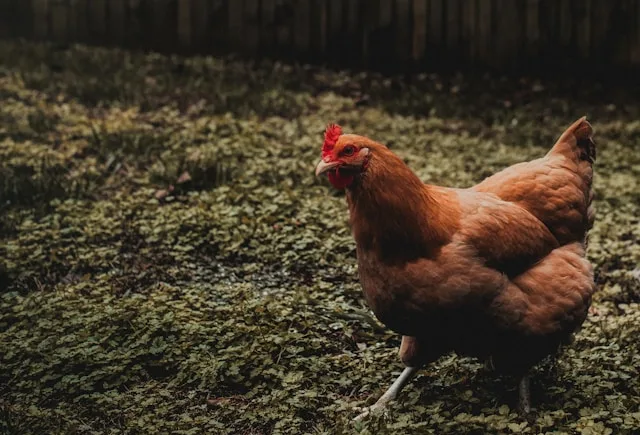Michigan dairy farm worker tests positive for H5 virus, similar to earlier Texas case, CDC reports
A dairy farm worker in Michigan has tested positive for the H5 bird flu virus, marking the second human case linked to the unprecedented outbreak of highly pathogenic avian influenza H5N1 among dairy cows in the US. The Centers for Disease Control and Prevention (CDC) confirmed that the worker experienced only a mild eye infection and has since recovered, much like the first case in Texas.
The Michigan worker, who worked on a dairy farm with H5N1-infected cattle, was under active surveillance when the infection was detected. The state’s health department sent daily text messages asking about symptoms, and the worker responded with symptoms indicative of infection. Health officials took swabs from the worker’s nose and eye, and while the nasal swab was negative, the eye swab tested positive for the H5 virus.
CDC Principal Deputy Director Nirav Shah emphasized the preparedness and active surveillance that led to the detection of this case. “We found this case because we were looking for it,” Shah stated. He also noted that the worker’s infection underscores the need for ongoing vigilance and precautions for those exposed to potentially infected animals.
Natasha Bagdasarian, Michigan’s chief medical executive, reiterated that the health risk to the general public remains low. “The virus is being closely monitored, and we have not seen signs of sustained human-to-human transmission. This early detection and monitoring are exactly how public health is meant to work,” she said.
The infection’s cause remains unclear, but the CDC suspects that raw milk splashed into the worker’s eye or contaminated hands rubbing the eyes may have led to the infection. Raw milk from infected cattle has shown extremely high levels of H5N1. It is not yet confirmed if the worker had access to personal protective equipment (PPE), such as face shields, which the federal government is distributing.
Currently, the CDC has only confirmed the worker’s infection as an H5-type influenza. Further testing to specifically type the virus as H5N1 is ongoing, with genetic sequencing results expected in one to two days. These results will help determine if the virus matches the strain seen in cows and if it has developed mutations that could facilitate human-to-human transmission.
The H5N1 virus’s potential to adapt to new hosts with each infection remains a concern. Experts are closely monitoring the dairy cow outbreak, first detected in March, for signs that the virus could spark a human outbreak. Dawn O’Connell, assistant secretary for Preparedness and Response at the US Department of Health and Human Services, announced that the federal government is moving to complete the production of 4.8 million doses of an H5N1 vaccine matched to the virus circulating in dairy cows.
To date, the US Department of Agriculture has recorded infections in 52 dairy cow herds across nine states, with Michigan reporting 19 infected herds. The CDC continues to assess and manage the risks associated with this outbreak, ensuring measures are in place to protect public health.
Analysis
The detection of a second human case of H5 bird flu linked to dairy cows raises several important considerations from multiple perspectives. This incident highlights the complexity of zoonotic diseases and the intricate interplay between animal and human health.
From a public health perspective, the swift identification and monitoring of the infected worker underscore the importance of active surveillance systems. The CDC’s prompt response and the Michigan health department’s daily symptom checks via text messages demonstrate effective early detection mechanisms. However, it also raises questions about the availability and use of personal protective equipment (PPE) among farm workers, suggesting a need for enhanced safety protocols in high-risk environments.
Economically, the outbreak among dairy cows and the subsequent human cases could have significant implications. The dairy industry may face challenges in ensuring the safety of its products and maintaining consumer confidence. The potential spread of H5N1 within the dairy sector could lead to increased costs for biosecurity measures, vaccination, and potential losses due to culling infected herds. Additionally, the production of millions of H5N1 vaccine doses reflects substantial financial investments to mitigate the outbreak’s impact on public health.
Sociologically, the infection of farm workers highlights the vulnerabilities faced by those working closely with animals. These individuals are at the frontline of zoonotic disease risks, often with limited access to comprehensive healthcare and protective measures. Addressing these vulnerabilities requires a concerted effort to improve working conditions, provide adequate PPE, and ensure access to timely medical care and vaccinations.
Politically, the outbreak and subsequent human cases necessitate coordinated efforts between federal, state, and local agencies. The response involves not only public health officials but also agricultural departments and emergency preparedness teams. Effective communication and collaboration are essential to manage the outbreak, protect public health, and address any political ramifications related to agricultural policies and worker safety regulations.
From a gender perspective, it is crucial to consider the roles and responsibilities of men and women in the agricultural sector. Ensuring equitable access to protective measures and healthcare resources for all workers, regardless of gender, is vital. Gender-sensitive approaches can help address specific needs and challenges faced by women in the industry, who may be disproportionately affected by health risks and limited access to resources.
In conclusion, the second human case of H5 bird flu linked to dairy cows underscores the multifaceted nature of zoonotic disease outbreaks. Addressing these challenges requires a holistic approach that considers public health, economic, sociological, political, and gender perspectives. Continued vigilance, proactive measures, and effective coordination are essential to mitigate the risks and protect both human and animal health.
